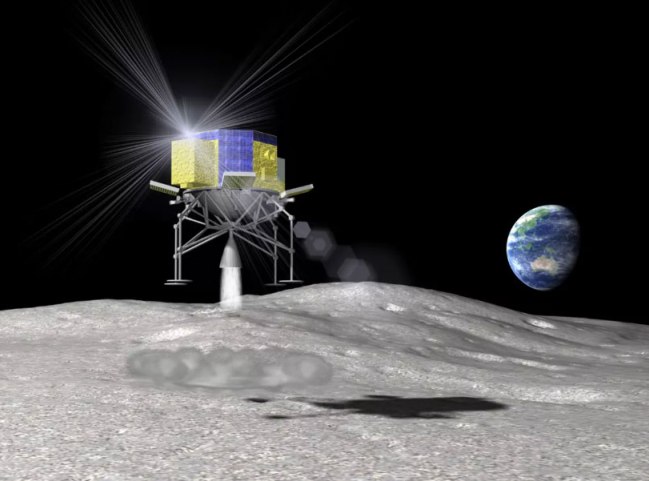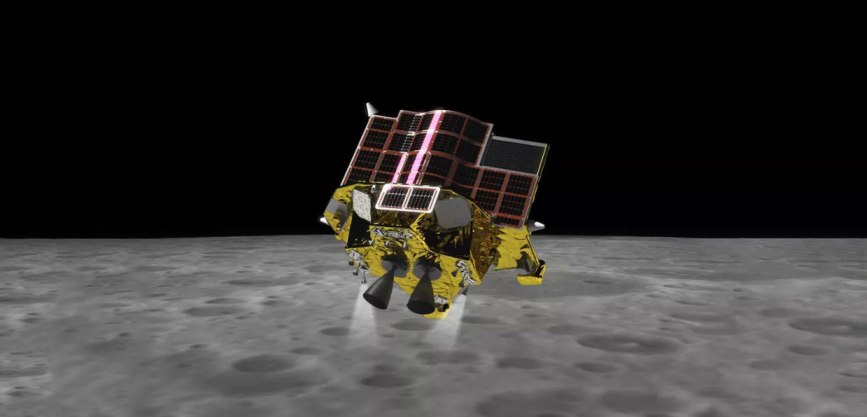On January 19, 2024, Japan’s national robotic spacecraft SLIM landed on the lunar surface, marking a huge success for Japan, making it only the fifth country to soft-land on Earth’s moon. The pioneers were the Soviet Union and the United States, which made their first flights to the lunar surface during the Cold War space race; then China, which successfully landed a probe in December 2013; India – Chandrayaan-3 lander and rover landed in August 2023. SLIM was expected to land within 330 feet (100 meters) of a target point on the rim of Scioli Crater, which explains the probe’s nickname “Moon Sniper.”
“First of all, the landing was successful,” Yamakawa Hiroshi, president of the Japan Aerospace Exploration Agency (JAXA), said during a post-landing press conference. In the future, “we will be able to access the lunar surface,” Hiroshi added. “I believe there is a path to this now.” Unfortunately, the probe’s solar panels are not generating electricity on the lunar surface as planned, JAXA officials said at a briefing. If the problem is not fixed soon, SLIM may lose contact with Earth. The probe’s battery can only support a few hours of operation on the Moon.
SLIM (short for Smart Lander for Investigating Moon) was launched last September along with the X-ray space telescope XRISM. Shortly after launch, the telescope was launched into low Earth orbit, and SLIM set off for more distant celestial shores. The probe made a long and winding route to the Moon and finally arrived in lunar orbit on December 25, 2023. Its initial orbit was elliptical with a large radius of curvature: SLIM was within 373 miles (600 kilometers) of the lunar surface at its closest point and 2,485 miles (4,000 kilometers) at its farthest point.
On January 14, 2024, SLIM performed its defining engine operation, circling its orbit at an altitude of 373 miles and setting the stage for descent and landing operations. Major landing operations began on January 19, when SLIM’s orbit dropped to approximately 9 miles (15 km) above the lunar surface. They culminated in a landing attempt, ending after 20 minutes.
SLIM reached various milestones during its descent, with the lander communicating with its operators throughout the historic landing and beyond. However, JAXA was unable to immediately confirm SLIM’s status after landing. It’s unclear why the solar cells aren’t working, JAXA officials said. But it is unlikely that they were damaged during the landing, since the rest of SLIM’s equipment appears to be intact and functional. According to JAXA, it is possible that the lander is not aligned with the sun’s rays as planned.

As lunar exploration progresses, so will the need to select specific sites to address important scientific questions. The SLIM mission architecture aims to change the standard of lunar landing missions from landing where it’s easy to landing exactly where it’s needed. SLIM achieved its desired landing accuracy, JAXA officials said during a press conference, although the mission team may need about a month to confirm that finding.
The probe’s research mission includes studying the surrounding area – a section of the Nectar Sea, located approximately 15 degrees south of the lunar equator, using an onboard spectrometer. The instrument’s data can provide insight into the composition of terrain, which in turn could shed light on the formation and evolution of the Moon, but it won’t be able to do that unless SLIM’s solar panels work.
There are two small additional vehicles on board SLIM – a small instrument called LEV-1 and a spherical craft known as LEV-2 (“Lunar Excursion Vehicle”). These small robots were designed to launch from the SLIM mothership and collect their own data and take photographs. The data shows that both LEV-1 and LEV-2 have been deployed and are operational as planned, JAXA officials said.
“Despite reports that the solar panels are not producing power and detailed analysis is needed, I consider it extremely exciting news that the moon landing has taken place. I would like to commend the efforts of everyone involved and intend to continue to support you in future achievements,” the head of the Japanese government wrote.
SLIM was not the first Japanese spacecraft sent to the Moon. Japan sent a tiny lander called OMOTENASHI on NASA’s Artemis 1 mission as part of the unmanned Orion capsule to lunar orbit and back in late 2022. But OMOTENASHI staff were unable to establish contact with the probe, and the landing attempt was abandoned. The private lander Hakuto-R made the leap in April 2023, but was unsuccessful. Hakuto-R, which was built and operated by Tokyo-based ispace, reached lunar orbit but crashed during its landing attempt after becoming stuck on the edge of a lunar crater.





